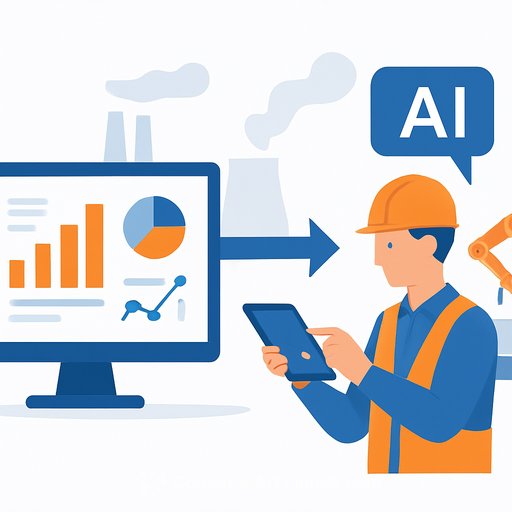AT&T's Geo Modeler: Generative AI for Live Network Operations
AT&T has activated a generative AI system, Geo Modeler, across its network to simulate, predict, and optimize coverage as conditions change. It blends synthetic data with a network foundation model and uses ray tracing to forecast how radio signals behave in complex geospatial environments.
The platform integrates with internal systems to automate network decisions, from antenna angle adjustments to broader configuration shifts. The goal: move closer to network autonomy while keeping employees in the loop to validate recommendations.
What Geo Modeler Does
- Simulates radio transmissions with ray tracing to predict coverage under shifting environmental and network conditions. Learn how ray tracing models wave behavior.
- Identifies coverage gaps from outages or events and optimizes nearby towers to compensate.
- Recommends everyday changes to improve performance and resource use, with simple actions like antenna tilt adjustments.
- Feeds on live feedback data that is monitored by employees to ensure accuracy and safety.
Why This Matters for Operations
- Lower MTTR: Faster detection-to-remediation by simulating impact and proposing fixes in minutes.
- Predictive resilience: Seasonal shifts, storms, or surges at major events are modeled before they happen.
- Resource efficiency: Recommendations focus on spectral efficiency and RF optimization, squeezing more from existing assets.
- Consistent change management: Automated tweaks with human oversight reduce variance across regions and vendors.
- Open RAN alignment: AI-driven orchestration can help close performance gaps in disaggregated deployments. O-RAN Alliance.
Data and Model Strategy Driving It
AT&T reports more than 600 AI models in production across its infrastructure. Instead of generic public data, it tunes large-language and agentic systems on internal network and customer data to solve specific operational problems.
Trouble tickets are loaded into generative and agentic frameworks that suggest fixes, generate code to implement them, and flag candidates for automation. A human stays in the loop to approve execution.
Operations Playbook: How to Adopt Similar Patterns
- Build a digital twin: Combine synthetic data with historical KPIs to simulate RF behavior and traffic patterns.
- Instrument feedback loops: Stream counters, alarms, and QoE to continuously calibrate simulations against reality.
- Guardrails first: Human-in-the-loop approvals, safe-change windows, and automatic rollback policies.
- Prioritize high-yield use cases: Antenna tilt, PCI/neighbor list updates, carrier aggregation tuning, and energy-saving modes.
- Automate the runbook: Convert top incident runbooks into agentic workflows; start with read-only and dry-runs.
- Plan for events: Precompute playbooks for severe weather, fiber cuts, and large public gatherings.
- Vendor neutrality: Ensure models can read/write across multi-vendor RAN and core interfaces.
KPIs to Track
- MTTR and time-to-detect (TTD)
- Customer-impact minutes per incident
- Throughput, spectral efficiency, and cell-edge KPIs
- Call drop rate and session setup success
- Change success rate and rollback frequency
- Energy per bit delivered
Risk, Safety, and Governance
- Model drift: Schedule periodic revalidation against ground truth and update training sets.
- Safe experimentation: Limit blast radius with staged rollout, canary cells, and geo-fenced policies.
- Auditability: Log recommendations, approvals, diffs, and outcomes for compliance and RCA.
- Security: Enforce least-privilege for agents; segregate control-plane access from inference services.
What This Signals
Generative and agentic AI, backed by synthetic data and ray-traced simulations, is moving from experimentation to daily operations. With human oversight and clear guardrails, carriers can shorten incident cycles, improve RF performance, and prepare networks for open, disaggregated architectures.
If you're upskilling your ops team to build similar capabilities, see AI and automation resources here: AI Automation Certification.
Your membership also unlocks:






